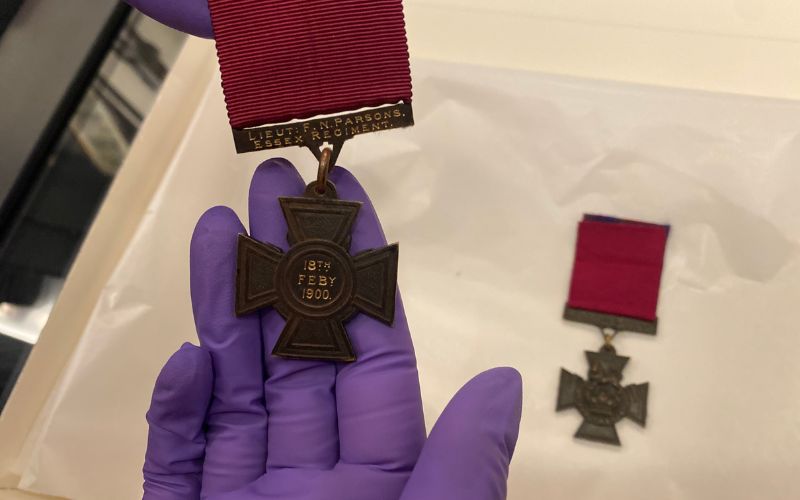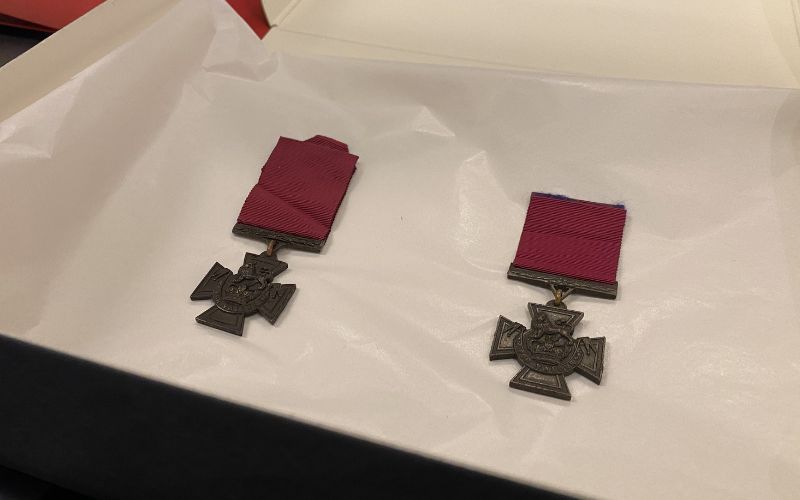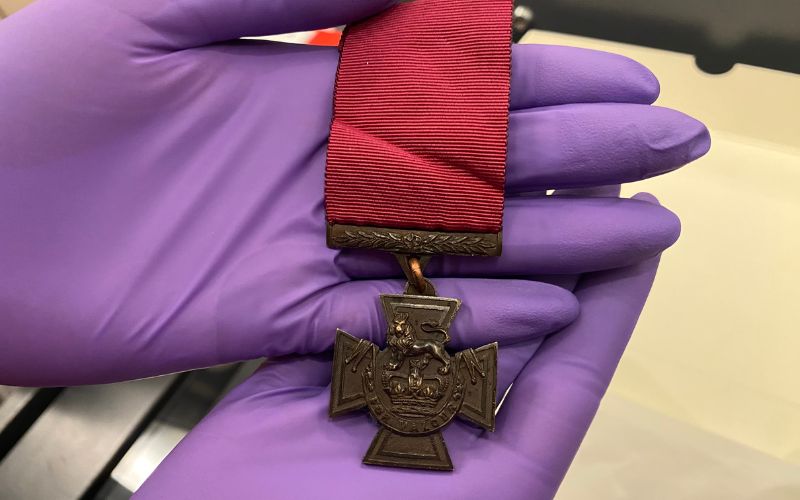Missing Victoria Crosses returned to Chelmsford Museum
Two Victoria Crosses reported missing from Chelmsford Museum have been recovered. The medals were returned anonymously to the museum and have now been independently verified as the originals.
The Victoria Cross is the highest military decoration for valour in the British armed forces and the two VCs are part of the Essex Regiment collection, which is housed at Chelmsford Museum. They were awarded to Sergeant William McWheeney in 1857, for his service during the Siege of Sevastopol, and to Lieutenant Francis Parsons posthumously in 1900, for acts of bravery during the Battle of Paardeberg.
The museum publicly announced that the medals were missing in February, after a routine inspection and subsequent search by museum staff confirmed they could not be located. At the time of this announcement, the museum said it was keeping an open mind about whether the medals might be missing within its own collections. However, their anonymous return confirms that the VCs had been taken from the museum. Essex Police is looking into the circumstances surrounding the medals’ reappearance.
The descendants of Sergeant McWheeney and Lieutenant Parsons were informed of all the latest developments, and now initial enquiries into their return are complete, the original crosses have replaced the replicas that were on display in the Essex Regiment Museum gallery.
Marc De’ath, Chelmsford City Culture Services Manager said:
“We are extremely relieved to have these Victoria Crosses back at Chelmsford Museum. These medals represent extraordinary acts of bravery carried out by Sergeant McWheeney and Lieutenant Parsons and they mean so much to their descendants and to our armed forces community.
“Although there has been a happy ending to this story, their removal should not have happened. We have learned valuable lessons already from this incident and remain committed to improving the management of our collections at Chelmsford Museum. This will continue to be a key priority for our curatorial team in the months and years to come so that nothing like it happens again.”
“Whilst we understand the interest in this news and that many people will be eager to find out exactly what happened, we would encourage patience as the police conduct their inquiries into the return of the medals. I would again urge anyone with information that may be relevant to please get in touch with the police.”
Dennis Vincent, Chair of the Essex Regiment Museum Trust said:
“The Essex Regiment Museum Trust is thrilled to see these historically and culturally significant artefacts returned to our collection. There have only ever been 1,358 Victoria Crosses awarded since their inception in 1856, and they are so much more than a small bronze cross; they represent the most inspiring and selfless actions by military personnel. I very much look forward to them being proudly displayed once more, allowing visitors to better understand, and admire them, and most importantly, to reflect on the sacrifices made by Sergeant McWheeney, Lieutenant Parsons and so many other men and women of the Essex Regiment.”
Victoria Crosses FAQs
The Victoria Crosses were returned to the museum anonymously in late April 2024.
As Essex Police continue to investigate the circumstances surrounding the recovery of the crosses, we are unable to share any further information at this stage.
Yes, both crosses were recorded on the museum’s collection database.
Items such as this are difficult to accurately value, with their true worth dependent on what collectors in the industry may be willing to pay to acquire them. However, recent estimations suggest each Victoria Cross may be valued in the region of £200,000–£250,000.
The two medals were awarded to Sergeant William McWheeney in 1857, for his service during the Siege of Sevastopol, and to Lieutenant Francis Parsons posthumously in 1900, for acts of bravery during the Battle of Paardeberg. Sergeant McWheeney served with the 44th (East Essex) Regiment of Foot and Lieutenant Parsons served with the later 1st Battalion of the Essex Regiment.
Prior to the return of the medals, the following steps had been taken or were ongoing to locate the items:
- Enquiries and liaison with Essex Police.
- A fingertip search of the Essex Regiment Museum collections store was conducted.
- The items were registered as missing with The Art Loss Register.
- Curators continued searching for the crosses as they carried out long-term collection management work.
- Monitoring of the art and militaria market.
- Regular communication the Essex Regiment Museum to share any new developments.
Chelmsford Museum and the Essex Regiment Museum’s collections are unusually large for museums of their size, with an estimated 100,000 objects in total.
With large collections built over many decades, some objects are yet to be catalogued on the museum database. This is common in museums across the country with large numbers of objects and limited curatorial resource.
The curatorial team is currently working on a long-term project to improve documentation of the museum collections. As part of this they’re working towards all collection objects being accurately catalogued on the museum database. This project will take some years for the museum’s small curatorial team to work through.
If you think you have information which may be of interest, you can let Essex Police know by submitting a report on their website or by using the online Live Chat service available Monday to Friday (excluding public holidays) between 10am–9pm.
Visit the Essex Police website to find out more about their online reporting services. Please quote reference number 42/15078/24.
Alternatively you can call 101.
If you would like to make an anonymous report you can contact independent charity @Crimestoppers, by visiting their website or by calling 0800 555 111.






